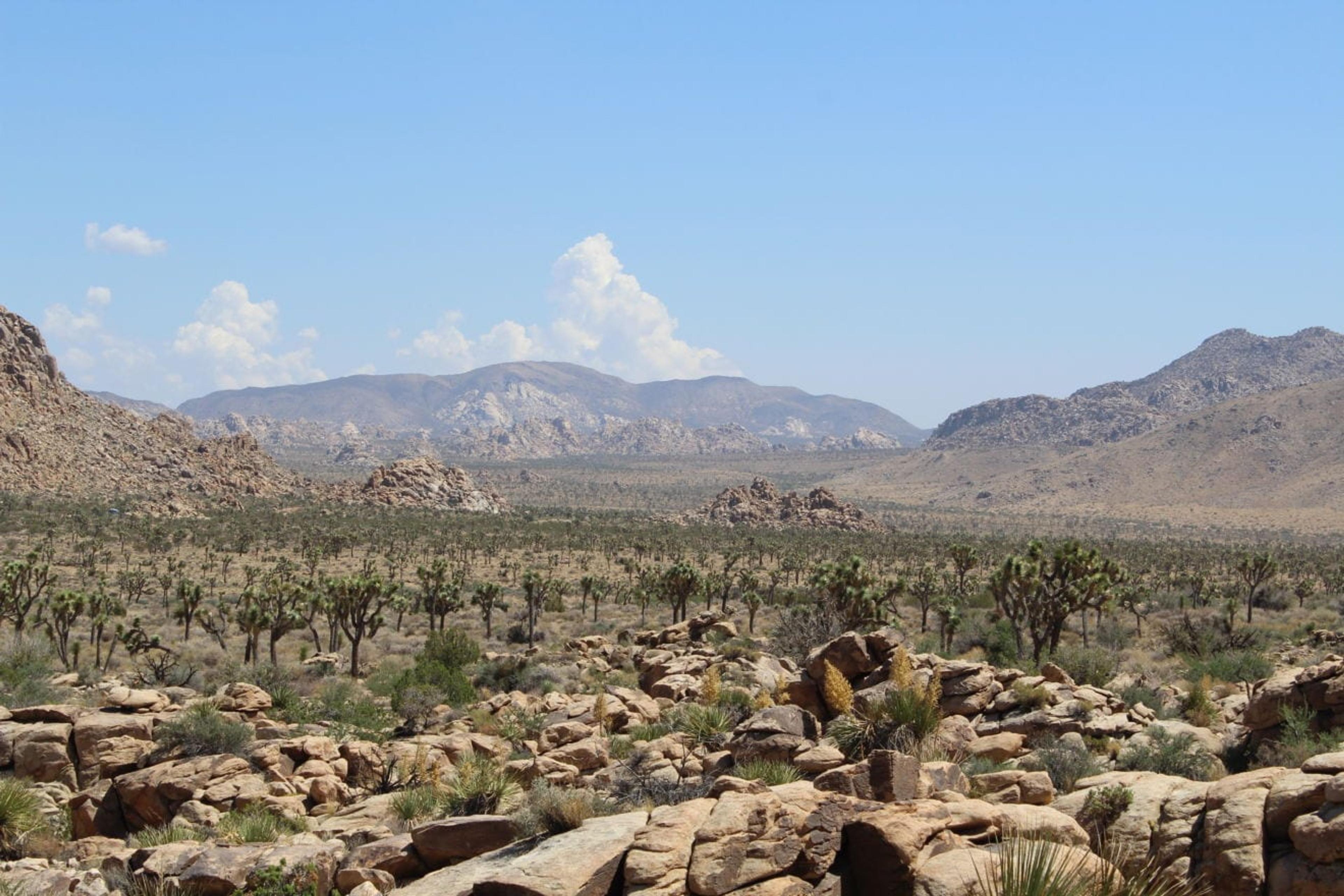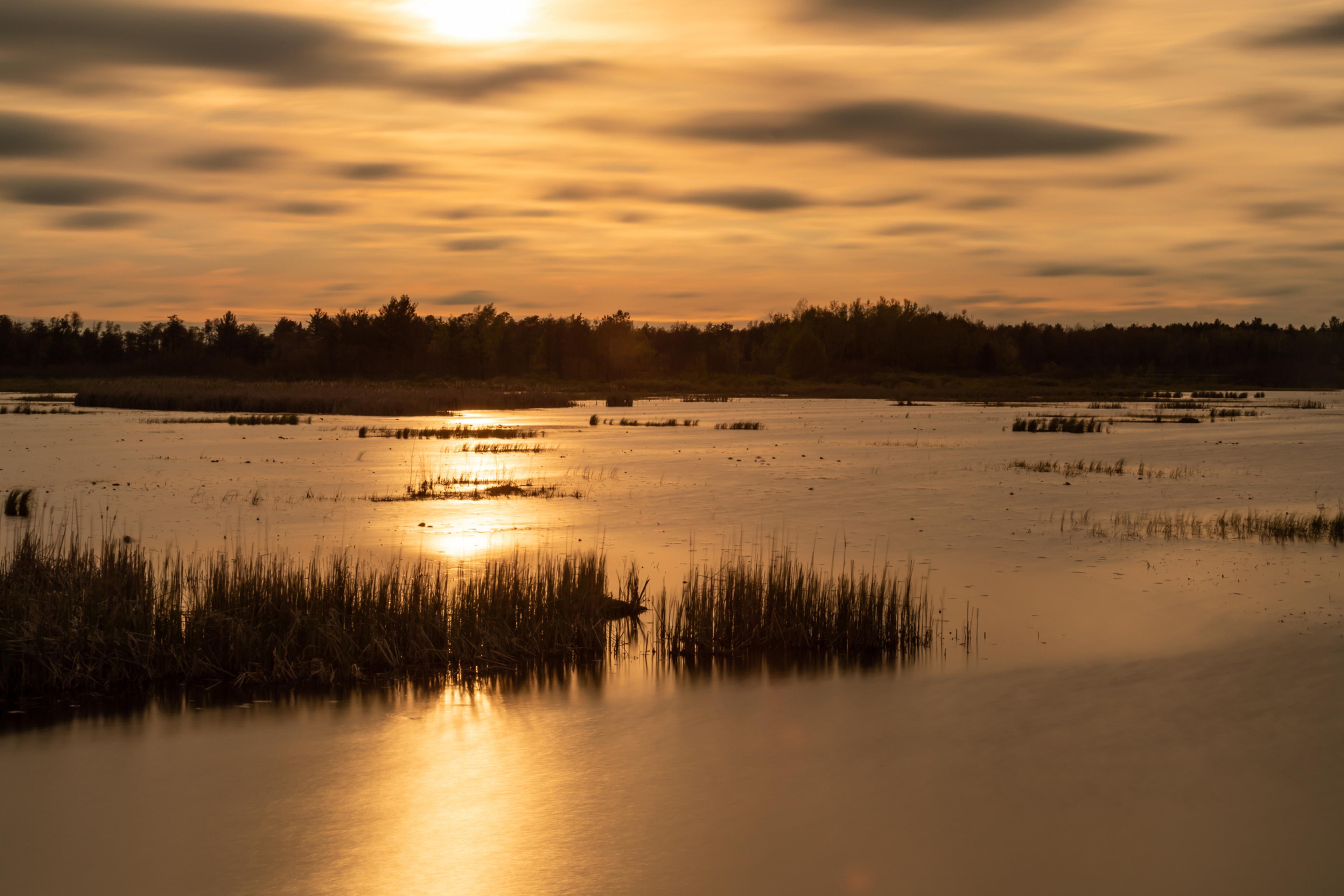Feel Happier and Healthier with a Dose of Nature
Kelli Barrett
| 3 min read

“I like this place and could willingly waste my time in it.”
William Shakespeare

The author in front of Skull Rock.
This past August, I spent one entire day at Joshua Tree National Park in southeastern California. The park is incredibly tranquil and beautiful, with one lone pothole-free road stretching throughout. The desert landscape is so different than what I’m used to here in Michigan. Hot, dusty trails are peppered with prickly pear cactuses and less-prickly, curvy Joshua trees, which span the park proper and outer area. There’s giant rock formations, one shaped like a skull. (I have a picture of me standing in one of its nostrils.) Another rock displays ancient petroglyphs that’s flat and wide enough to climb and sit inside.
I felt happy that day to say the least. I’m often at my happiest, and feel healthiest, when I’m experiencing nature in some way. And it doesn’t have to be at a place as serene and wild as Joshua Tree. Planting flowers, walking at a local park or bike riding by fall foliage has a similar effect.
I’m not a scientist, wellness specialist or official tree hugger but I know humans have a connection with natural environments. Simply put, being outside feels nice. And for centuries, people have considered fresh air and walking it off as effective treatments for a host of mental and physical ailments.
Experts continue to demonstrate that the nature effect is more than just a good feeling, and that spending time outdoors has a measurable effect on our health and well-being.

Take a University of Michigan study from 2014 that linked group walks in local natural environments with lower depression, less perceived stress and enhanced mental health and well-being.
“Our findings suggest that something as simple as joining an outdoor walking group may not only improve someone’s daily positive emotions but may also contribute a non-pharmacological approach to serious conditions like depression,” said Dr. Sara L. Warber, the report’s lead author.
Or a 2010 study from Environmental Health and Preventive Medicine that found participants who walked in a forest had lower blood pressure than those who took a jaunt along urban streets.
In her book, The Nature Fix, journalist Florence Williams shadowed scientists examining the effect nature has on the human brain. She explains how just 15 minutes sitting in a park or walking a nature trail can leave a person feeling psychologically restored. This restorative power isn’t found only in grand sweeping landscapes but in decidedly un-grand leafy neighborhood parks and tree-lined streets.
And don’t forget that trees, streams, wetlands and other forms of green infrastructure improve air quality and help keep pollutants out of our water supply. These public health benefits plus the enhanced opportunities for exercise that green spaces provide cause environmental groups to say the maintenance and creation of these areas plays a major role in the fight against heart disease, diabetes and other chronic conditions.
In short, we need nature. When we don’t get enough of it, we’re in danger of getting nature deficit disorder, according to author Richard Louv. While not a medical diagnosis, it simply means our disconnect from nature can affect our mental, emotional and physical health.
Consider our connection with nature a good thing. It means that our time spent strolling and chatting in parks, taking in a sunset or traveling hundreds of miles to stare at the Rocky Mountains, Pacific Ocean or a Joshua tree, is a health fundamental, like wellness visits, preventive screenings and daily vitamins.
Your doctor may not write a script for a nature walk or bird watching – not yet anyway – but there’s no prescription necessary.
If you enjoyed this post, check these out:
Photo credit: Frank DeBonis





